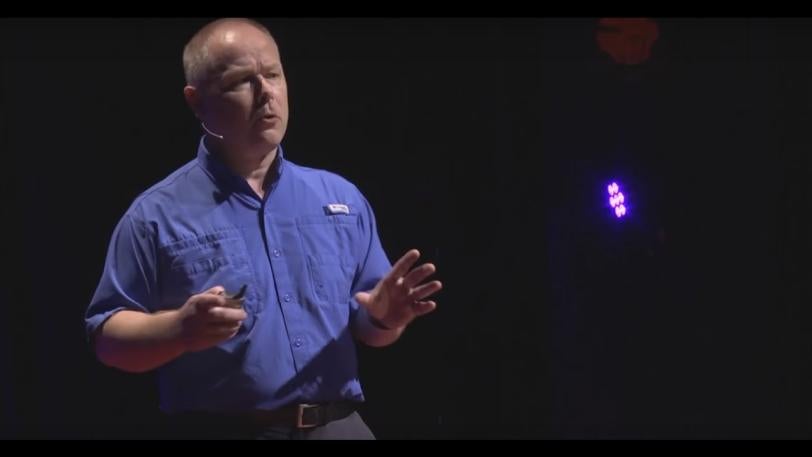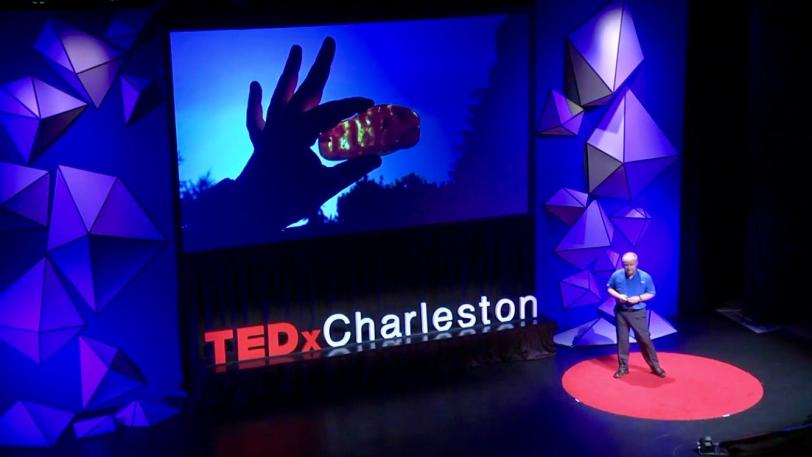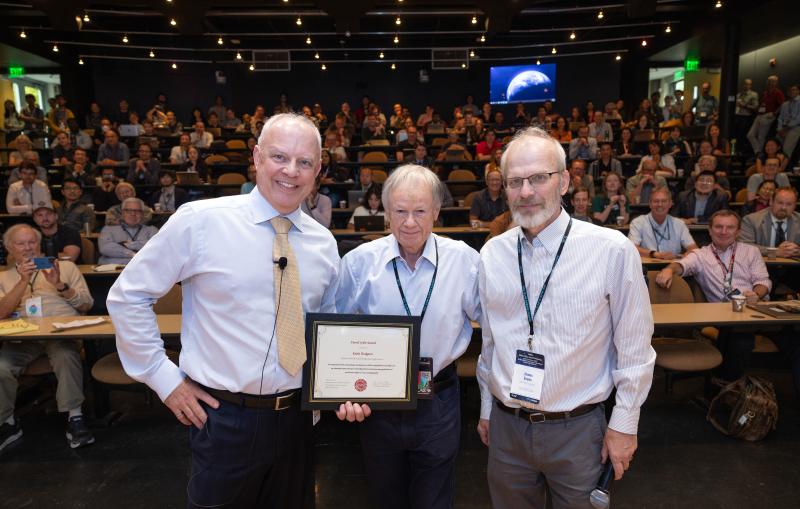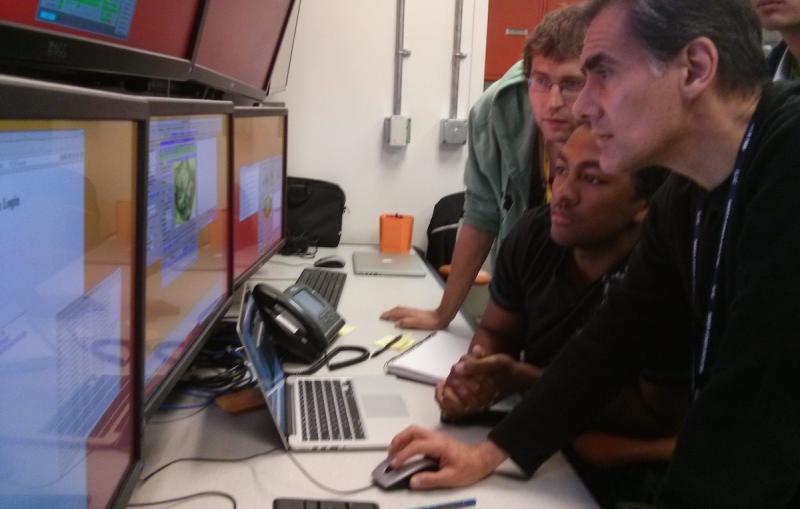‘Brighter Than A Billion Suns’: SLAC Studies Featured in TEDx Talk
Paleontologist Phil Manning describes the “Imaging Life on Earth” project at TEDxCharleston.

Brighter Than A Billion Suns: Imaging Life On Earth
Phil Manning and his colleagues have used synchrotron light for nearly a decade to help interpret the chemical signatures locked within fossilized life. Bright X-rays have allowed them to study fossilized worm burrows, recreate pigment patterns in ancient bird feathers, see how Jurassic dinosaur bones heal and image the living chemistry of 50-million year old plant fossils.
Manning, a professor of paleontology at the College of Charleston and professor of natural history at the University of Manchester, recently spoke about these efforts during his talk “Brighter Than A Billion Suns: Imaging Life On Earth” at a TEDx event in Charleston, South Carolina on Oct. 19.
He collaborates with Uwe Bergmann, physicist at the Department of Energy’s SLAC National Accelerator Laboratory, and Roy Wogelius, professor of geochemistry at the University of Manchester, to apply synchrotron rapid scanning X-ray fluorescence to iconic fossil specimens. These imaging experiments take place at the Stanford Synchrotron Radiation Lightsource (SSRL) at SLAC, as well as the Diamond Light Source in the United Kingdom. SSRL is a DOE Office of Science User Facility.
Contact
For questions or comments, contact the SLAC Office of Communications at communications@slac.stanford.edu.
SLAC is a multi-program laboratory exploring frontier questions in photon science, astrophysics, particle physics and accelerator research. Located in Menlo Park, Calif., SLAC is operated by Stanford University for the U.S. Department of Energy's Office of Science.
SLAC National Accelerator Laboratory is supported by the Office of Science of the U.S. Department of Energy. The Office of Science is the single largest supporter of basic research in the physical sciences in the United States, and is working to address some of the most pressing challenges of our time. For more information, please visit science.energy.gov.





